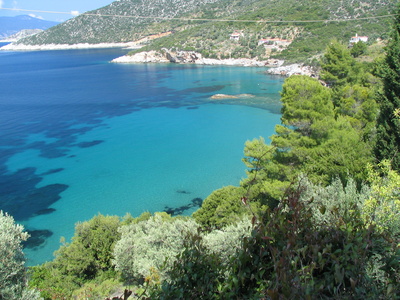|
Alonissos |
||
|
|
In 1992 the first sea reserve in all
Greece was declared around
Alonissos. The idea is to
preserve the population of monk seals that lives on the
island.
Alonissos still is a prime destination
for nature lovers and people who appreciate peace and quiet.
Despite the destruction by the earthquake the old capital is
still worth visiting. The narrow alleys are pretty. Since
they are also to narrow for cars there is no traffic
whatsoever.
There are beautiful beaches on the
island. Among them is the very special Kokkinokastro.
Literally translates to red castle. The name derives from the
red colour of the earth. Alonissos is also popular for people who
are interested in homoeopathy. There is a sizeable institute
for traditional homoeopathy on the island. They research and
teach. The main reason for locating the institute here is the
existing of a number of rare medical plants that are being
used in alternative medicine. The island is ideal for
hiking. The
countryside is versatile and interesting and the north of the
Alonissos in particular is sparsely populated. Everything
here comes across as if they are a little bit behind. No one
seems to rush anything. It also has an effect on prices.
Restaurants for example are considerably less expensive than
their counterparts on other islands. Highly recommended is
the tavern “Lobster”. As the name suggests they have a
reputation for Lobster (among other seafood) that is served
in a beautiful garden. The restaurant is in Patitiri. The seaport is probably your best choice
for accommodation anyways. Pension Ilias Studios in Chora is
recommended though. There is a campsite near Patitiri and
another a little further away.
There is no airport on the island. To get there take a ferry from Volos, Agios Konstantinos or Halkidiki. The latter is the easiest coming from Athens. There are regular connections between the islands. Cheaper are the big ferries, faster are the Flying Dolphins.
|
|
